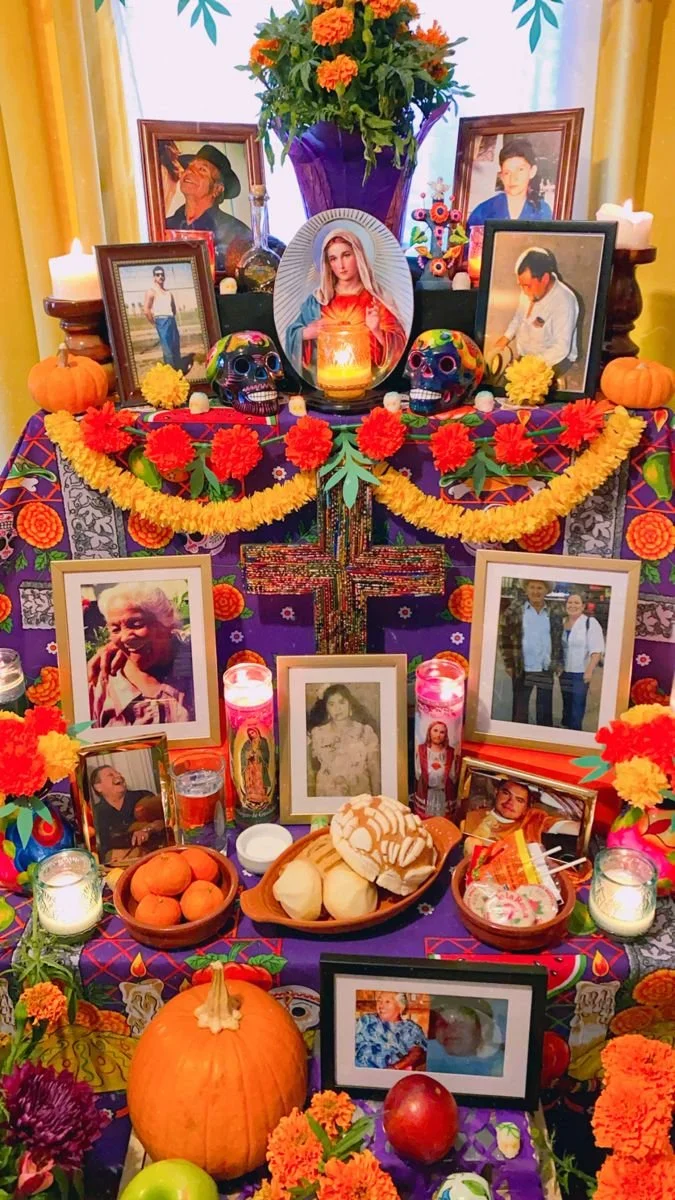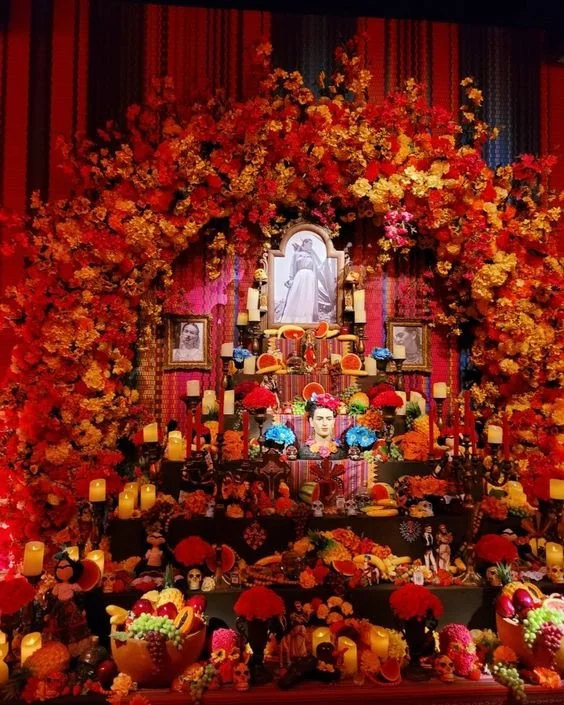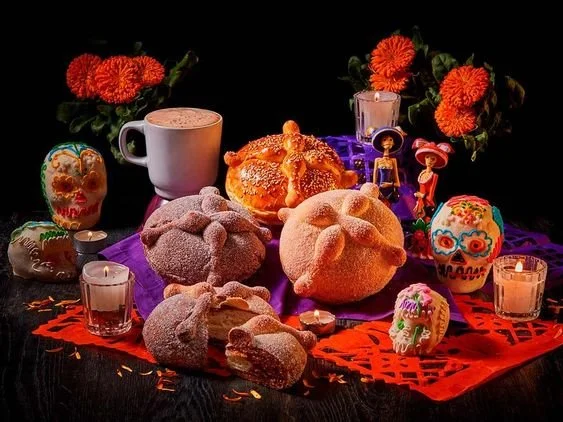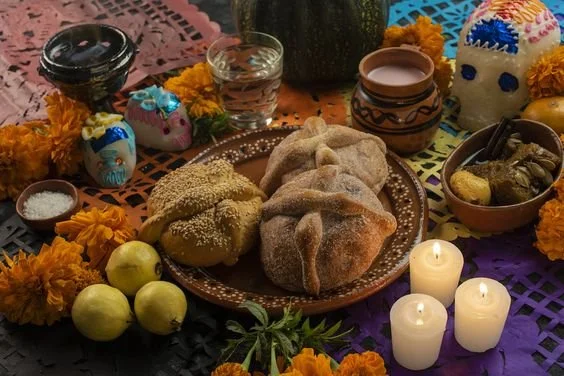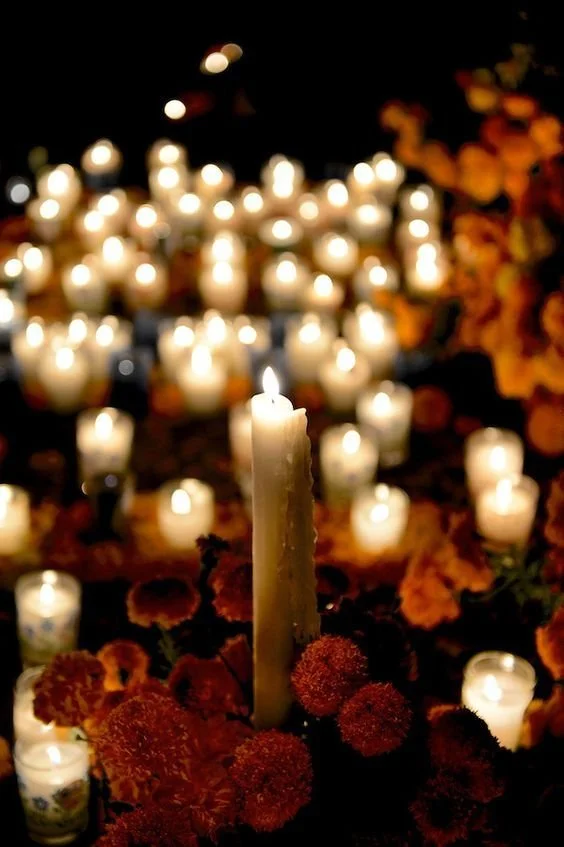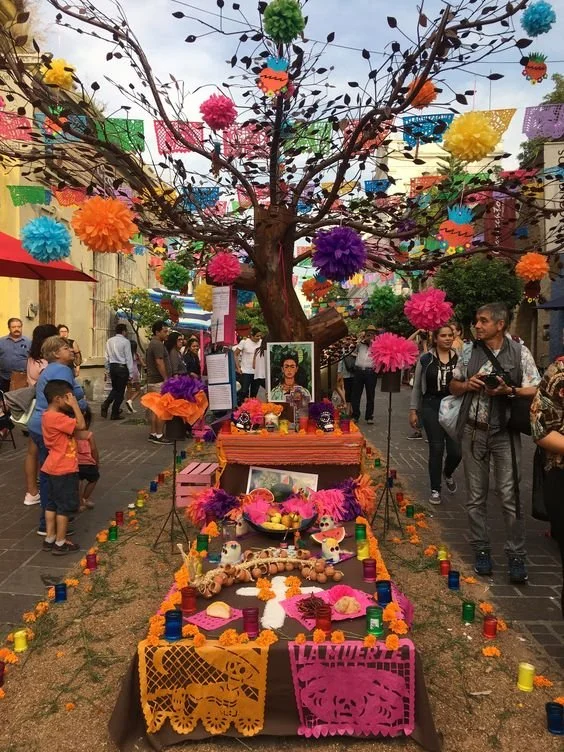Creating an Ofrenda: A Step-by-Step Guide to Honoring Loved Ones during Dia de los Muertos
Dia de los Muertos, or the Day of the Dead, is a vibrant and profound Mexican tradition that commemorates the lives of loved ones who have passed away. This cherished holiday, typically celebrated from October 31 to November 2 depending on locality, is a beautiful blend of culture and religion. It is a time when families come together to honor the memories of their dearly departed through joyful celebrations, lively gatherings, and the creation of ofrendas, or altars.
Understanding the Essence and Origins
Dia de los Muertos has roots deep in Mesoamerican civilizations, such as the Aztecs, Mayans, Toltecs, and Nahua people. These ancient cultures had practices and rituals to honor the dead long before the Spanish arrived in the Americas. The holiday has since merged with Catholicism, aligning with All Saints' Day and All Souls' Day observed in the Catholic calendar.
The belief behind Dia de los Muertos is that during this time, the souls of the deceased return to the earthly realm to visit their loved ones. It's a celebration of life, a time to remember and honor the departed, and to support their spiritual journey.
What is an Ofrenda?
An ofrenda is a beautiful and intricate altar that speaks volumes about the culture's honoring of ancestors and cherished memories. It's not just an arrangement of objects; it's a heartfelt tribute, a piece of our souls laid bare. An ofrenda is carefully curated with photographs of departed loved ones, their favorite foods, drinks, mementos, and marigolds—those vibrant, golden marigolds—offering their radiant hues and sweet fragrance to guide the spirits back to the realm of the living. It's a personal space where we celebrate the lives of those we've lost, inviting their spirits to reunite with us, if only for a brief, cherished moment in time. The ofrenda is a sacred bridge between this world and the next, a tangible manifestation of our love, memories, and the enduring connection we share with those who have journeyed beyond.
Creating Your Ofrenda for Dia de los Muertos
Step 1: Set the Stage
Select a prominent location for your ofrenda, a place where your loved ones can be prominently remembered and honored. It could be a table, a dedicated corner, or even an outdoor space. Cover the chosen area with a clean, colorful tablecloth that reflects the festive spirit of Dia de los Muertos.
Step 2:
Build the Levels
Traditionally, ofrendas are built in multiple tiers, representing the stages of life and the journey to the afterlife. Stack boxes or sturdy crates to create various levels. Each level symbolizes a different aspect of the celebration and the afterlife.
Step 3:
Decorate and Adorn
Adorn the ofrenda with papel picado, colorful tissue paper with intricate cut-out designs, and cempasúchil, vibrant marigold flowers. These elements are believed to guide the souls back home with their vibrant colors and scents. Add candles, preferably in yellow or orange, to light the path for the souls.
Marigolds: The Blossoms of Remembrance
When it comes to El Dia de los Muertos, one can't help but be captivated by the stunning marigolds that grace this profound celebration. These golden blooms, also known as cempasúchil, are more than just flowers; they are the essence of this vibrant tradition, embodying the very spirit of this sacred day.
A Dance of Color and Meaning
The marigold's vivid hues of orange and yellow are no accident; they are deliberate choices deeply embedded in our culture. These colors represent the sun and its life-giving energy. During this beautiful occasion, we believe the marigolds act as a guiding path for the souls of our departed, leading them back to the world of the living.
Guiding Loved Ones Home
The scent of marigolds wafting through the air is like a comforting embrace for the souls. It's as if the flowers sing to our loved ones, saying, "Come, this way back to us." Their distinctive aroma is believed to guide and beckon the spirits, ensuring they find their way to the ofrendas, the heart of the celebration.
More Than Petals: Symbolism and Tradition
In Mexican culture, symbolism is profound, and marigolds are no exception. Their significance goes beyond just being blooms; they're an embodiment of the enduring connection between the living and the departed. They remind us that death is not an end, but a continuation of a beautiful journey.
So, when you witness the landscape adorned with marigolds during El Dia de los Muertos, know that each petal carries a profound message - a message of love, remembrance, and the eternal cycle of life and death. These marigolds are our whispers to the souls, saying, "You are loved, cherished, and forever in our hearts."
Step 4: Include Photographs and Mementos
Place photographs of your departed loved ones at the center of the ofrenda. Surround the images with personal mementos, belongings, or items they cherished in life. This is a way to reconnect with their essence and memories.
Step 5: Offer Favorite Foods and Drinks
Prepare and include the favorite foods, beverages, and treats of the departed. It's believed that the aroma and essence of the food attract the souls, allowing them to savor the flavors once again.
Step 6: Water and Salt
Incorporate a bowl of water to quench the thirst of the souls after their journey. Salt, representing purification, is often placed on the ofrenda to ensure a cleansing ritual for the spirits.
Step 8: Personal Messages and Remembrances
Write heartfelt messages or letters to your loved ones. Express your feelings, memories, and the impact they have had on your life. Place these messages on the ofrenda, allowing for a spiritual connection.
Step 9: Sugar Skulls and Pan de Muerto
Include sugar skulls (calaveras) and pan de muerto (bread of the dead) on the ofrenda. Sugar skulls, with the names of the deceased written on them, are a prominent symbol of Dia de los Muertos. Pan de muerto is a traditional sweet bread made for this occasion.
Step 10: Add Personal Touches
Customize the ofrenda with personal touches that reflect the personalities and passions of the departed. It could be artwork, crafts, musical instruments, or any items that honor their individuality.
A Heartfelt Tribute to Beloved Souls
Creating an ofrenda is an act of love and remembrance. It is a way to celebrate the lives of those we hold dear, inviting them to share in the joy and festivities of Dia de los Muertos. As you craft your ofrenda with love and care, you embrace the spirit of this beautiful tradition, keeping the memories of your loved ones alive and cherished for generations to come. Happy Dia de los Muertos!



